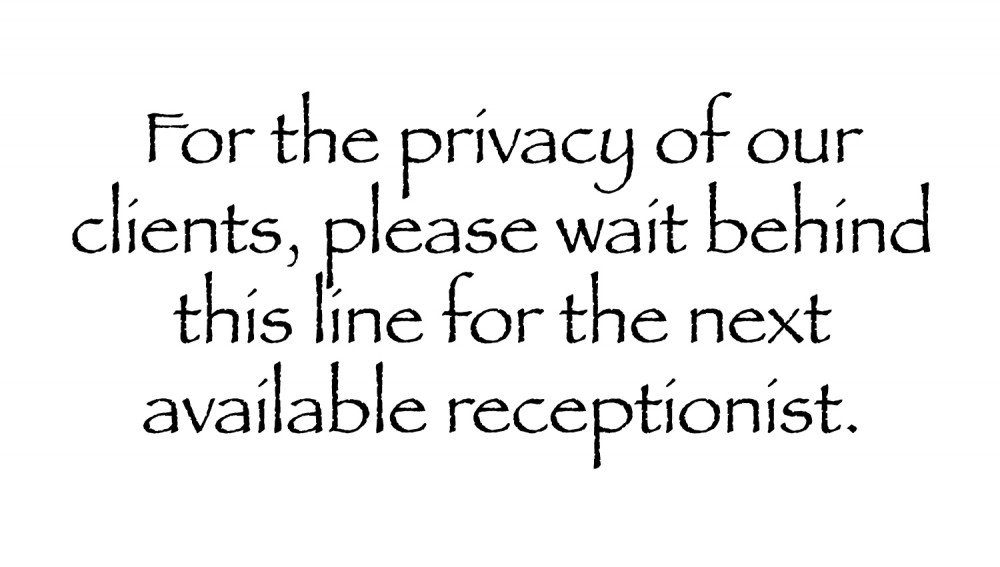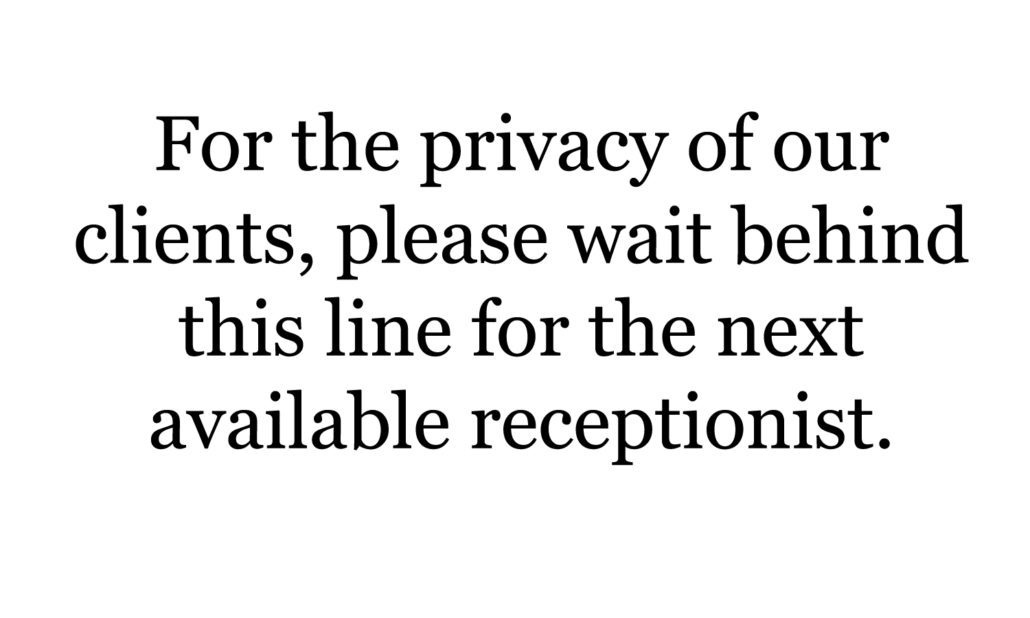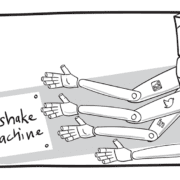Written Communication: Avoid Mixed Signals
People evaluate you, and your message, not only by the words that you say but also by how you say them. Before you’ve said ten words, your audience will have formed opinions about your intelligence, your level of education, and your credibility. Whether they ought to form those opinions so quickly and on the basis of so little information is a matter of some debate, but that they form opinions quickly is an established fact.
There is almost universal agreement about what I’ve said thus far when the concept is applied to speaking. There does not seem to be the same degree of awareness when it comes to written communication. The same dynamics come into play when someone picks up your brochure, reads a sign in your office, or uses your website. Professionals who would never answer their business phone with a casual, “What’s up?” have no qualms about putting a sign like this in front of their receptionist:

The typeface used here is called “Papyrus” and has its uses—summer camp, amusement parks, or Roman ruins. But it is out of place in a professional office, where it unintentionally communicates “we are not very concerned about this sign, about confidentiality, or about typography.”
The lettering in this second image, on the other hand, presents important matters in a credible way.

The wording is the same, but the meaning is different.
Your printed material sets the tone for the rest of your interactions with your client or customer. Take the time to craft the presentation of your message as well its content. You will communicate effectively with your audience and avoid sending mixed signals.
Tim is a graphic designer at Matt Jensen Marketing.






